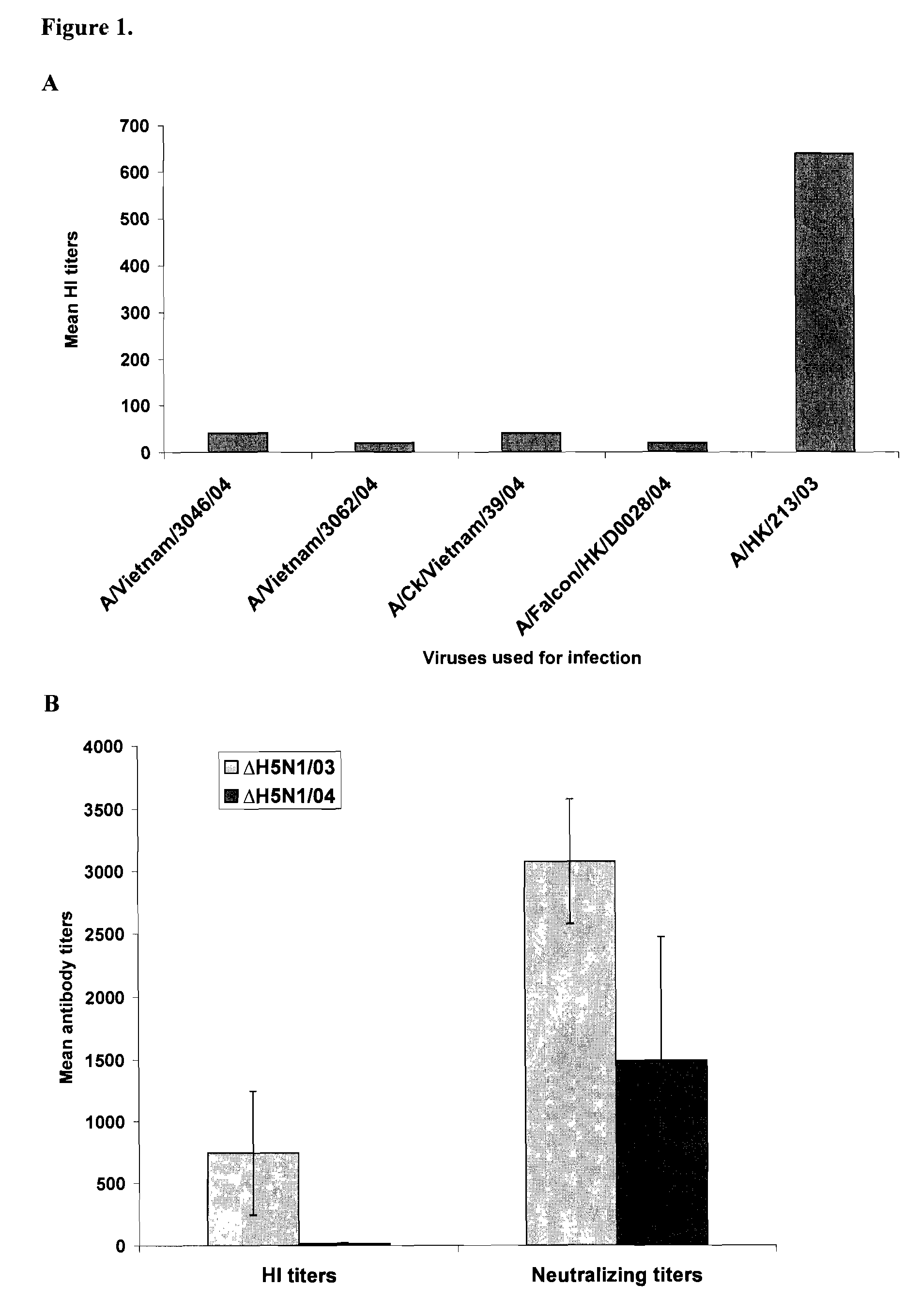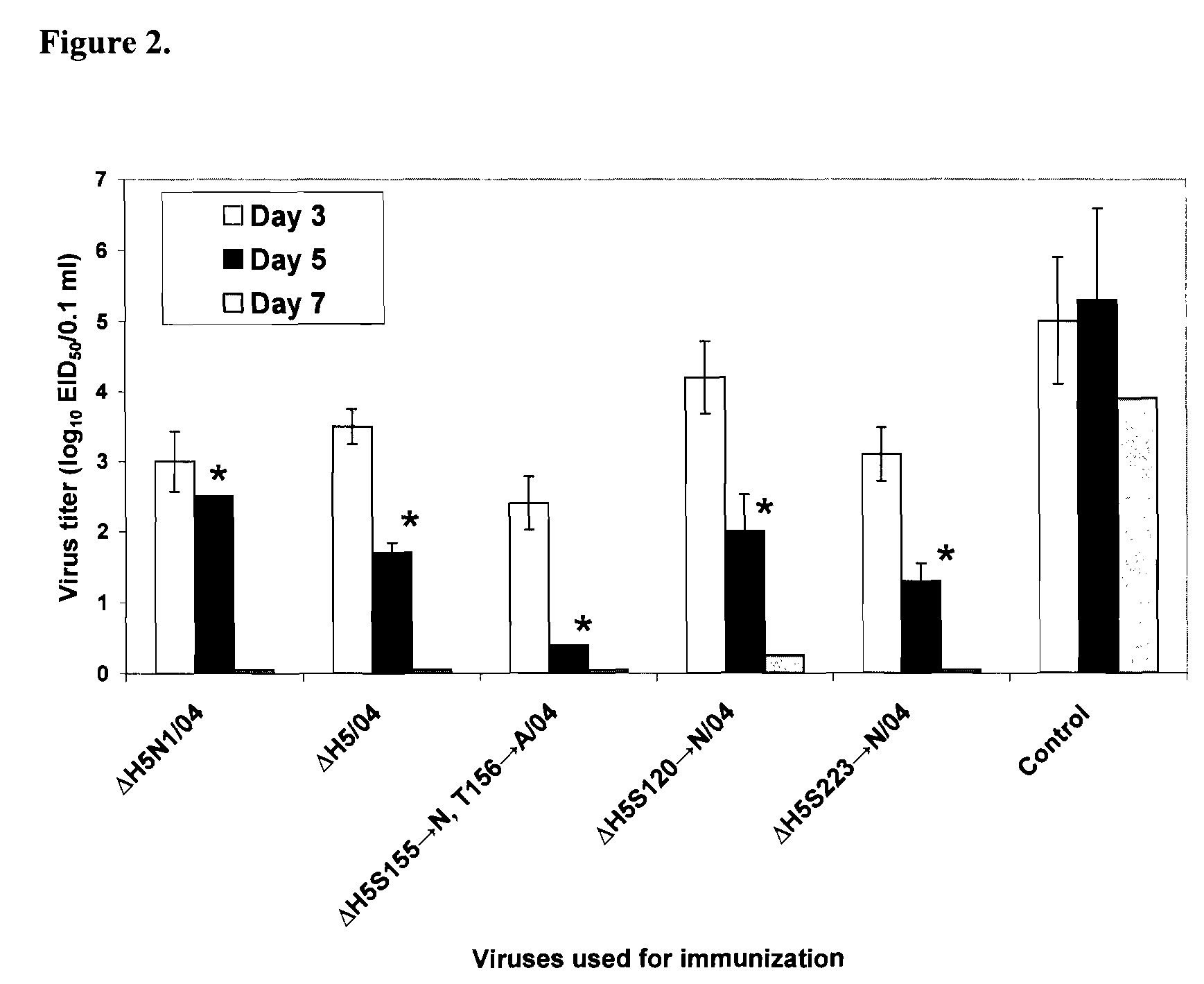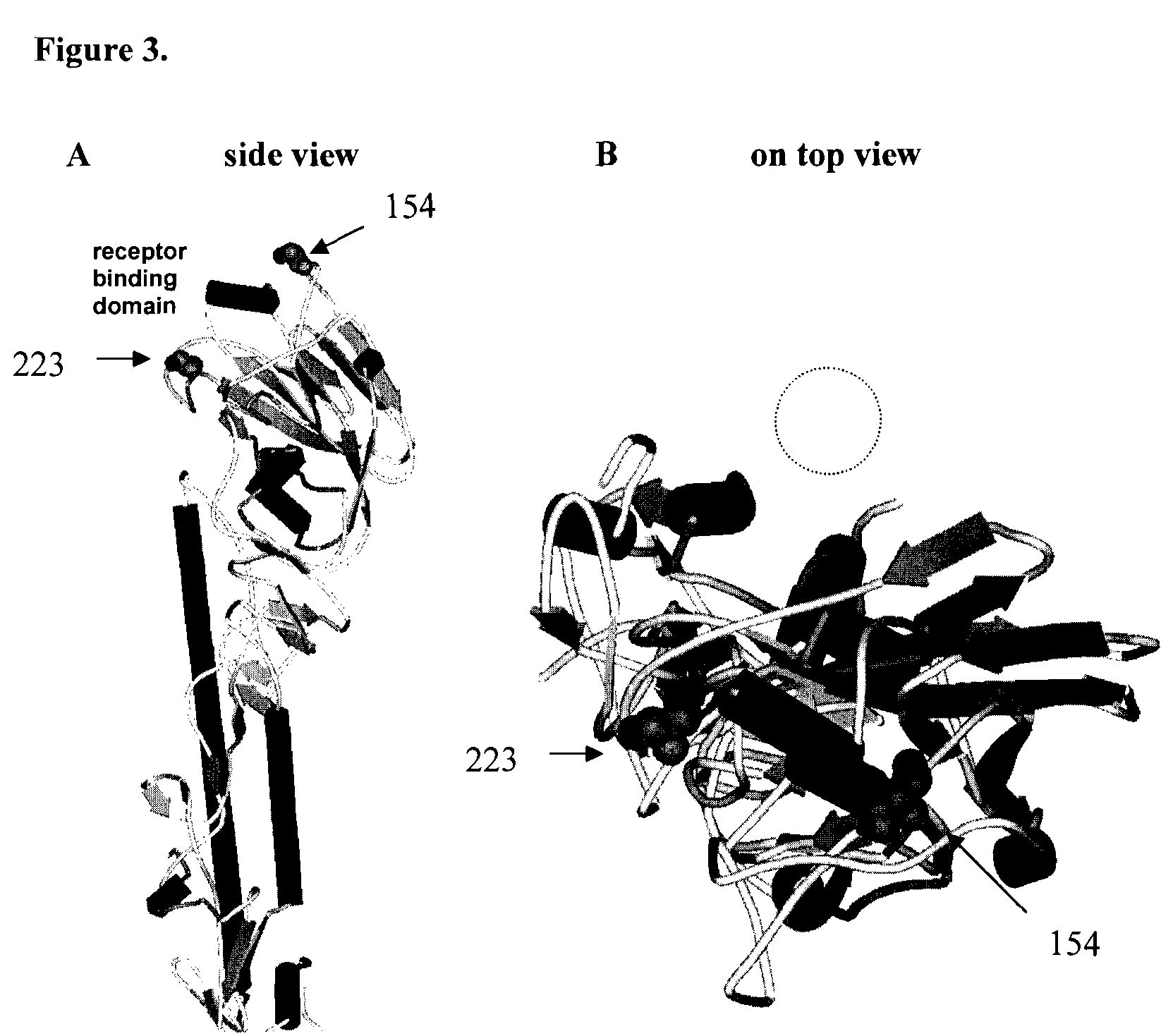Modified influenza virus for monitoring and improving vaccine efficiency
a technology of influenza virus and vaccine efficiency, applied in the field of modified influenza virus for monitoring and improving vaccine efficiency, can solve the problems of too attenuated annual disease outbreaks, particularly high levels of illness and death, to stimulate an ideal immune response, and achieve the effect of increasing reactivity and antigenicity
- Summary
- Abstract
- Description
- Claims
- Application Information
AI Technical Summary
Benefits of technology
Problems solved by technology
Method used
Image
Examples
example 1
Serum Antibody Titers of Inoculated Ferrets
[0094]Highly pathogenic H5N1 viruses were obtained from World Health Organization (WHO) collaborating laboratories in Asia. All work with these viruses was performed in BL3+ facilities at St. Jude Children's Research Hospital. To compare the immunogenicity of the 2003 influenza viruses of Z genotype, which became dominant in 2004, with that of the 2004 viruses, we inoculated ferrets with the H5N1 virus isolated from a fatal human case (A / HK / 213 / 03) (Guan et al., Proc. Natl. Acad. Sci. USA 2004, 101:8156) and with four H5N1 viruses isolated from humans, chickens, and falcons in 2004 (FIG. 1A). Male and female outbred ferrets were obtained through a special breeding program of the Animal Resources Center at St. Jude Children's Research Hospital. Animals were 3-5 months old and were seronegative by HI tests for exposure to currently circulating influenza A H1N1, H3N2, and H5N1 viruses and influenza B viruses. Viruses were propagated in the all...
example 2
Generation and Antigenic Characterization of Recombinant ΔH5-A / PR / 8 / 34 Viruses
[0096]To test the impact of the identified amino acids on immunogenicity and protection against virus challenge, we used the 8-plasmid reverse genetics system to generate recombinant viruses with seven gene segments of A / PR / 8 / 34 and the HA gene segment of A / Vietnam / 1203 / 04 containing single point mutations (Hoffmann et al., Vaccine 2002, 20:3165). Recombinant viruses rendered nonpathogenic by modification of H5 HA at the cleavage site were generated by DNA transfection (Hoffmann et al., Vaccine 2002, 20:3165). Point mutations were inserted into the HA during PCR by using the QuikChange® Site-Directed Mutagenesis Kit (Stratagene, Cedar Creek, Tex., USA) and a set of H5 HA-specific primers. Reassortant viruses contained the HA gene or the HA and neuraminidase (NA) genes from H5N1 viruses in the genetic background of A / PR / 8 / 34 (H1N1) virus (see Table 1a for viruses generated for this study and their abbreviat...
example 3
HI Tests with Chicken and Horse Red Blood Cells
[0098]Another interesting observation was obtained in an HI test with chicken and horse red blood cells (RBCs). Interestingly, recombinant ΔH5S223→N / 04 virus were less able to agglutinate 1% horse RBCs but it agglutinated chicken RBCs to a high titer (1:1024). None of the remaining recombinant viruses differed in their reaction to chicken and horse RBCs to the same extent.
PUM
| Property | Measurement | Unit |
|---|---|---|
| size | aaaaa | aaaaa |
| reactivity | aaaaa | aaaaa |
| antibody titer | aaaaa | aaaaa |
Abstract
Description
Claims
Application Information
 Login to View More
Login to View More - R&D
- Intellectual Property
- Life Sciences
- Materials
- Tech Scout
- Unparalleled Data Quality
- Higher Quality Content
- 60% Fewer Hallucinations
Browse by: Latest US Patents, China's latest patents, Technical Efficacy Thesaurus, Application Domain, Technology Topic, Popular Technical Reports.
© 2025 PatSnap. All rights reserved.Legal|Privacy policy|Modern Slavery Act Transparency Statement|Sitemap|About US| Contact US: help@patsnap.com



